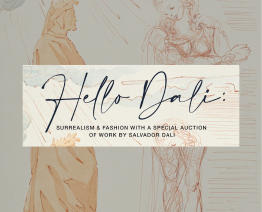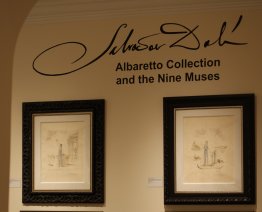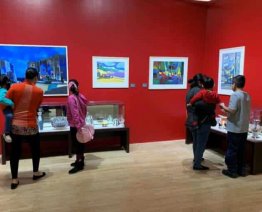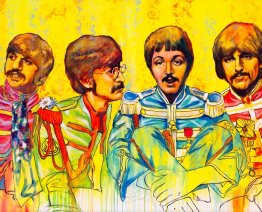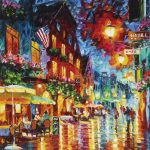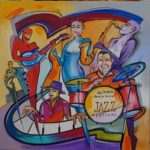Decoding Michael Cheval’s Tribute to Modern Artists
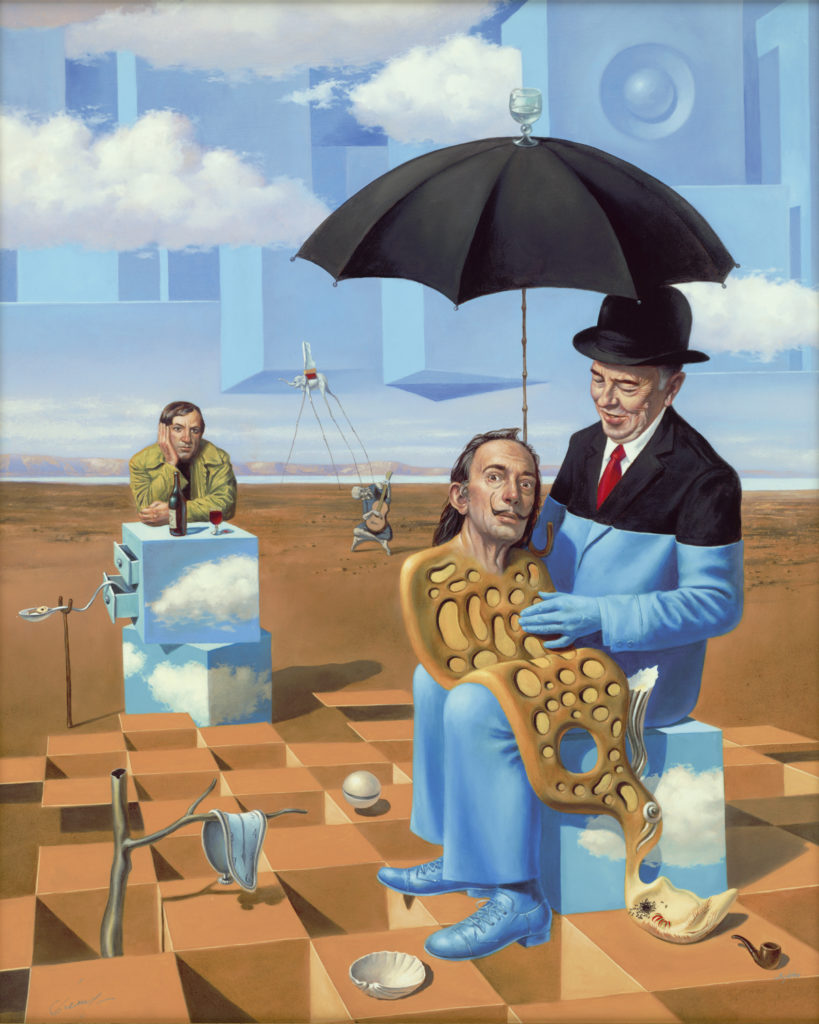
“Lullaby of Uncle Magritte” (2016), Michael Cheval
In Michael Cheval’s “Lullaby of Uncle Magritte,” viewers are faced with shape-filled landscapes, odd trinkets and a man who looks to be made out of cheese. It begs the question: “What does it mean?”
According to the Absurdist artist, the painting is his tribute to artists René Magritte, Salvador Dalí and Pablo Picasso, blending symbols and motifs from some of their most famous works.
“This painting is a dedication to the three artists who, in my opinion, changed the perception of art in the 20th century,” Cheval says. “I wanted to make a dedication and to thank the artists who have defined my taste in art and opened new horizons for me.”
To dive into all of the references packed into this artwork, let’s take a look at each artist and the citations Cheval included.
René Magritte
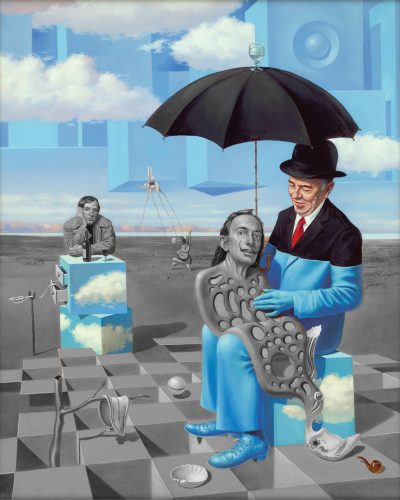
Highlighted are details of “Lullaby of Uncle Magritte” inspired by Rene Magritte.
The most prominent figure in the painting is the titular Magritte, a renowned Surrealist from Belgium. Magritte often portrayed ordinary objects in unusual contexts to provide different meaning.
One famous example of Magritte’s work is “The Treachery of Images” that depicts a simple pipe for smoking. However, written under it is “Ceci n’est pas une pipe,” which translates to, “this is not a pipe.” While seemingly contradictory, the statement is in fact true – the work is a painting of a pipe, not an actual pipe. Cheval nods to this painting with a pipe lying near Magritte.
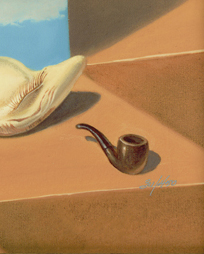
Detail from “Lullaby of Uncle Magritte”
Cheval also quotes Magritte’s “Hegel’s Holiday” by having the artist hold an umbrella with a glass of water placed on top of it.
Finally, Magritte’s cloudy appearance is a reference to his “Black Magic” painting, while the cube-filled sky is what Cheval calls “almost an exact quote” from Magritte’s “The Summer Steps.”
Salvador Dalí
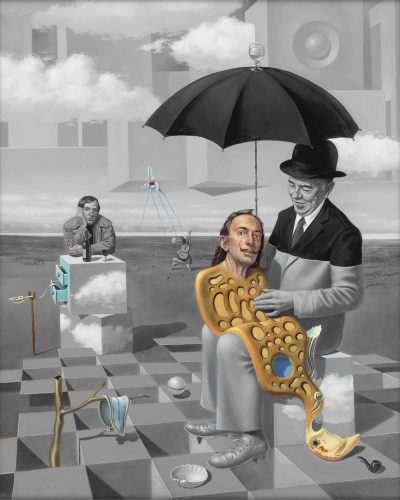
Highlighted are details of “Lullaby of Uncle Magritte” inspired by Salvador Dali.
Dalí was best known for his bizarre and striking Surrealist works. The Spanish artist was just as famous for his eccentric behavior, and left behind a legacy that inspires many modern artists to this day.
Dalí is instantly recognizable thanks to his wide-eyed gaze and upturned mustache, even when he is portrayed as a cheese-like rock in Cheval’s work. This is Cheval’s nod to Dalí’s “Enigma of my Desire or My Mother, My Mother, My Mother.” The painting is Dalí’s exploration of Freudian thought and one of his earliest contributions to Surrealism.
Cheval pays tribute to one of Dalí’s most famous paintings, “The Persistence of Memory,” with a melting clock, while the elephant with spindly legs in the background is adopted from Dalí’s “The Elephants” and “Dream Caused by the Flight of a Bee Around a Pomegranate a Second Before Awakening.”
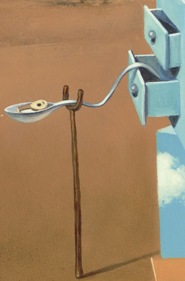
A detail from “Lullaby of Uncle Magritte”
In a clever way of paying homage to two artists at once, Cheval depicts Picasso leaning on a drawer from which a spoon emerges, and within the spoon is a tiny lute. This is a quote from Dalí’s painting, “Portrait of Picasso.” Interestingly, Dalí called Picasso a “destroyer” of art.
Pablo Picasso
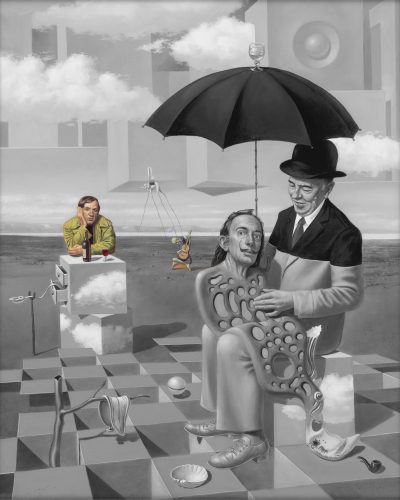
Highlighted are details of “Lullaby of Uncle Magritte” inspired by Pablo Picasso.
Picasso is regarded as one of the greatest modern artists, known for co-founding Cubism, collage and creating masterpieces in a multitude of mediums.
Cheval’s tribute to the Spanish artist is a humble one. A young Picasso is shown resting on a drawer with a bottle of wine, which could be a nod to Picasso’s “The Wine Bottle” and to Cubist still life.
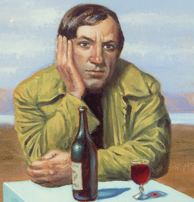
Detail from “Lullaby of Uncle Magritte.”
Like the other artists in “Lullaby of Uncle Magritte,” Cheval refers to Picasso’s art. The figure seen on the horizon is from “The Old Guitarist,” a painting from Picasso’s Blue Period (1901 to 1904). The monochromatic figure seems out of place in Cheval’s work, but may be an expression of Cheval’s desire to generate a reaction from his viewers, much like Picasso intended with “The Old Guitarist.”

Detail from “Lullaby of Uncle Magritte”
There are other symbols and objects in Cheval’s “Lullaby of Uncle Magritte” to uncover. Let us know in the comments what you think they could be.
View the art of Michael Cheval with Park West Gallery to unlock more mysteries by the Absurdist artist. Call (800) 521-9654 ext. 4 or sales@parkwestgallery.com to acquire Cheval art.

